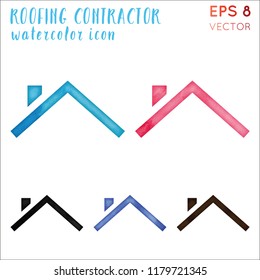When you're selecting paint colors, it's easy to forget just how illumination can transform your selections. All-natural light changes throughout the day, and the kind of man-made lighting you make use of can either improve or mute the tones you have actually selected. You could locate that a shade looks lively in one setting yet shabby in one more. To ensure your paint choices genuinely resonate with your space, you'll need to take into consideration these lighting elements meticulously. So, how do you evaluate colors successfully in varying light problems? Recognizing this can lead you to the best combination for your home.
Recognizing Natural Light
When you think of how all-natural light effects your area, consider its direction and intensity. The way sunlight goes into an area can considerably alter the understanding of paint shades. As an example, north-facing windows provide a cooler, softer light, which can make warmer shades appear more vibrant. Alternatively, industrial painter to aircraft painter! - -facing home windows generate brilliant, cozy light that can rinse cooler shades, making them look dull.
Pay attention to the moment of day, also. Morning light has a various quality compared to late afternoon light. Morning sunlight is frequently softer, while afternoon light can be harsher, impacting exactly how you perceive your picked paint color.
Additionally, the strength of natural light adjustments with the seasons. During summertime, areas may feel brighter and a lot more saturated, while winter months light can be more muted.
To truly understand exactly how natural light affects your paint choices, test your colors in various lights conditions. Repaint commercial building exterior painting on your walls and observe just how they transform throughout the day.
In this manner, you'll ensure your chosen colors reverberate with the natural light your room obtains, creating an unified setting that you'll enjoy.
Influence of Artificial Lighting
All-natural light isn't the only factor influencing your paint options; synthetic lighting plays a considerable duty, also. The sort of man-made lighting you make use of can significantly transform just how a paint color appears in your area.
For example, warm, incandescent bulbs can enhance warm tones, making them look richer and extra welcoming. On the other hand, trendy fluorescent lights may rinse those same colors, making them appear dull or even grey.
When you're choosing paint shades, consider the kind of artificial lighting present in the space. just click the following page , as an example, are readily available in numerous color temperature levels, and they can either brighten up your selected shades or produce a plain comparison that mightn't fit your style vision.
You'll wish to evaluate your paint colors under the specific illumination problems you'll have in your home.
Furthermore, think about the intensity of your fabricated illumination. Brilliant, straight illumination can rinse softer shades, while dark illumination can make darker tones feel larger.
Color Examples in Different Lights
Comprehending exactly how paint colors look in different lights is critical for making the appropriate selection for your space. When you pick out shade samples, it's vital to view them under the illumination conditions they'll be in. All-natural daylight, fabricated light, and even the time of day can significantly change just how a color shows up.
Begin by testing your samples in the area where you intend to paint. Observe exactly how the shades transform throughout the day. For instance, a cozy off-white might look inviting in the early morning sunlight but appear plain under fluorescent lights. If you have large windows, take into consideration how the angle of the sunlight affects the color throughout the day.
Next, don't forget to examine your examples with fabricated illumination. If your space mostly makes use of LED light bulbs, make sure to evaluate exactly how those colors show up because details light.
Lastly, consider using numerous samples. Paint swatches on the wall surface and analyze them at various times. By doing this, you'll obtain a real sense of just how the shade interacts with your room, guaranteeing you make a choice you'll love for years to find.
Final thought
In conclusion, recognizing exactly how lighting affects your paint choices is vital for attaining the ideal look in your space. By evaluating examples in both natural and fabricated light, you can see how colors change and communicate with your atmosphere. Do not hurry the process; take your time to observe exactly how light modifications throughout the day. By doing this, you'll ensure your final selection matches your home wonderfully, producing an unified environment that reflects your design.
